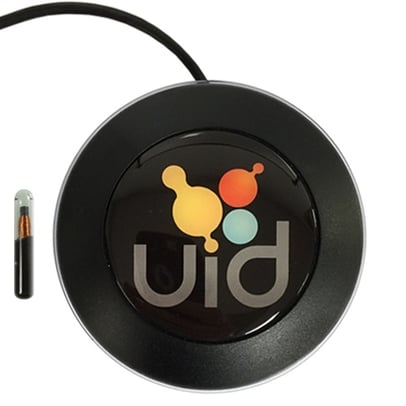The research industry is increasingly relying on new techniques and technologies to improve animal welfare. Improvements have been limited as paper-based systems can cause issues with access and accuracy, while electronic documents face challenges with tracking and compliance. We've been focused on reducing animal usage and furthering the 3Rs – replacement, refinement and reduction, through the use of innovative technology that monitors the proficiency of surgeons and tracks surgery of models, and we'd like to share our findings with you. Learn about this system and its strategies to improve surgical performance – and animal welfare.
 1. Improving the efficiency of surgeons
1. Improving the efficiency of surgeons
For any given surgery, each employee wears a personal RFID chip on their wrist or collar, which is scanned before entering any information in the system. This way, it’s clear which employee entered information in the system. The animals are assigned a cage label with an RFID microchip that will follow the animal throughout its stay at the facility. The RFID chip will reveal, for instance, the study number, strain, sex, date of birth, procedure, ship date and feed type.
2. Tracking surgery
At the start of each surgery session, 15-inch monitors will give the surgery prep person all the information they need to know about the study or surgery. The surgeons simply scan in, hands-free, to the screen and system monitors their start time and stop time. When the animal is passed to the closer, that employee scans in their wristband to track their start and end times as well. A separate recovery screen displays the animal’s recovery process. Recovery and animal checks generally occur via mobile Surface Pro (Microsoft), with a wireless pen that connects via Bluetooth. This way, the animals can stay in their cages to the extent possible.
3. Scanning animals for improved information
Scanning in the animal brings up a wealth of information. A team can assign animals a clinical score and can also view the patency of their catheters. The software will alert a supervisor or veterinarian when the clinical score dips below a certain level, while the catheter patency check tells us whether catheters are full, partial or blocked. If it’s the latter, a report is generated for staff to review.
A daily observation screen monitors if each animal has been checked by staff at least twice per day. Our system also provides a percentage of weight loss or gain, compared to the original surgery weight. When it’s time to ship animals, unique shipping screens help technicians assign animals to a box, and ensure that the right number of animals are being shipped.
4. Improving quality control
Software can also help monitor surgeon performance; for any given surgeon, the system can track the number of surgeries completed, which can even be itemized by procedure. With this data, the average surgery time for each surgeon is recorded and can be compared to the average surgery time of other employees for the same surgery. This helps organizations make sure surgeries are standard across all sites and all surgeons, and also to identify problems and training needs. For example, the surgeons with the best performance will train other staff. Weekly reports can be generated on each surgery group and their site performance to understand how many surgeries have been performed this week, how many surgeries have shipped, and how many animals were euthanized in surgery.
5. Reducing animal usage
We've found that beta testing of this software system has shown a significant reduction in animal use as well as cost savings. Early estimates were tens of thousands of dollars per year in cost savings. We hope this number will increase over time as we continue to find additional ways to work more efficiently.
As far as quality control, using an integrated software system helps reduce the complaint resolution time in cases where a complaint is received or if a customer has an issue with a particular surgery. The system will identify the animal in question, who handled the animal, what happened to the animal and at what time. This system helps pinpoint the issue quickly as part of an ongoing process to improve surgery quality and processes.
Looking ahead: additional enhancement of the 3Rs
Additional new features can better support controlled drugs, expiration dates and lot numbers which are tied to individual animals. We are currently beta testing a new feature where, upon receipt of an animal, we scan it in for a clinical score or feedback on the animal. This way, you can immediately replace the animal if needed. This should help determine what went wrong and prevent problems of a similar nature from occurring again.
Using this software system, organizations can track extra animals to better utilize them, which should cut down on the overall number of animals used. It also allows you to take surgery, animal health and soft tissue removal videos, which are tied to the unique RFID chip inside the animal, as well as being able to view a 3D image of each animal.
This custom software system continues to evolve and it's introduction will no doubt improve surgery centers in being even more efficient and productive, with additional reductions in animal usage as part of the initiatives for furthering the 3Rs.
*This blog was originally published in 2018.


